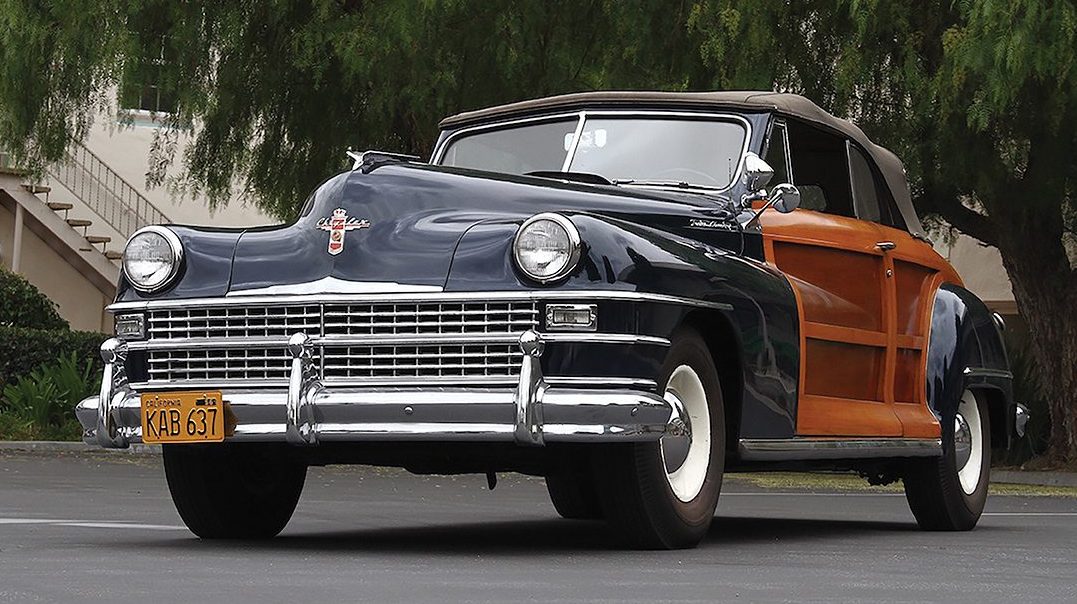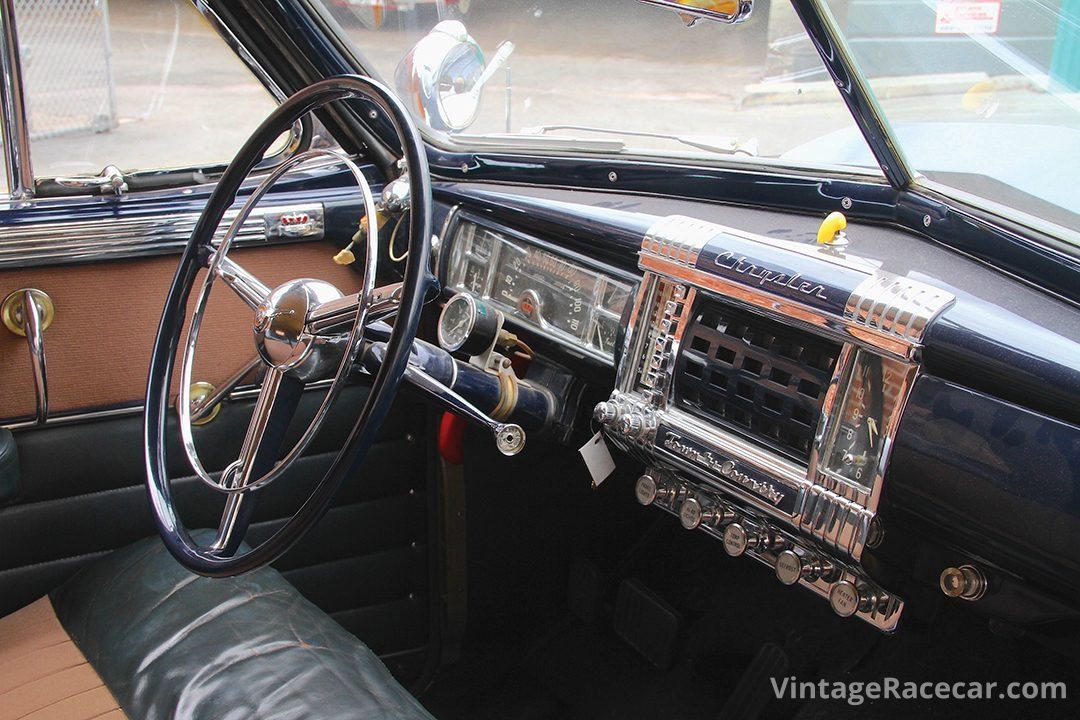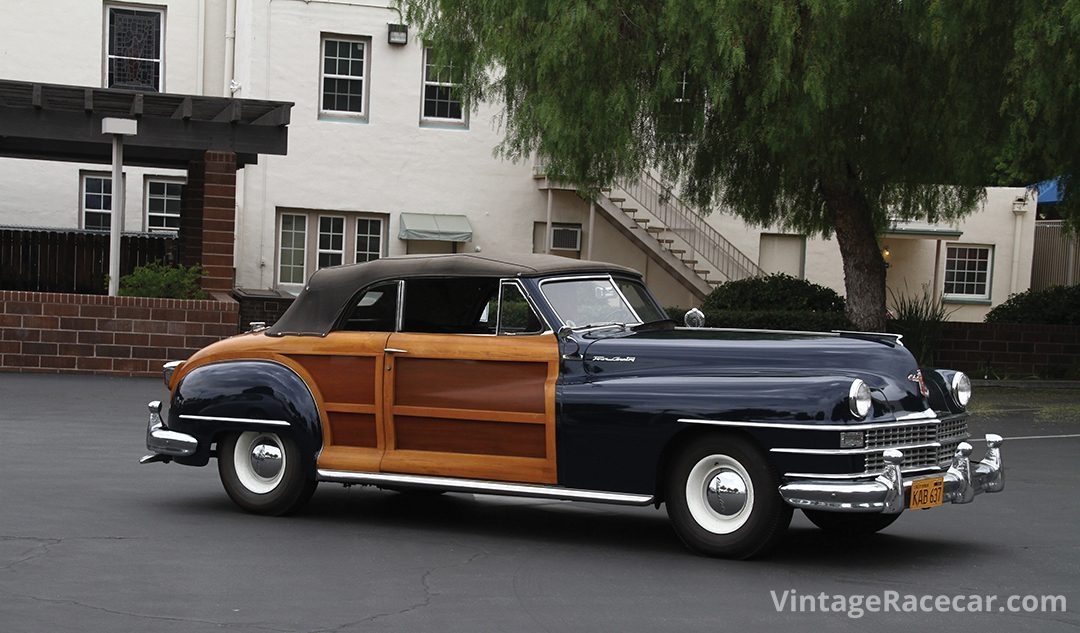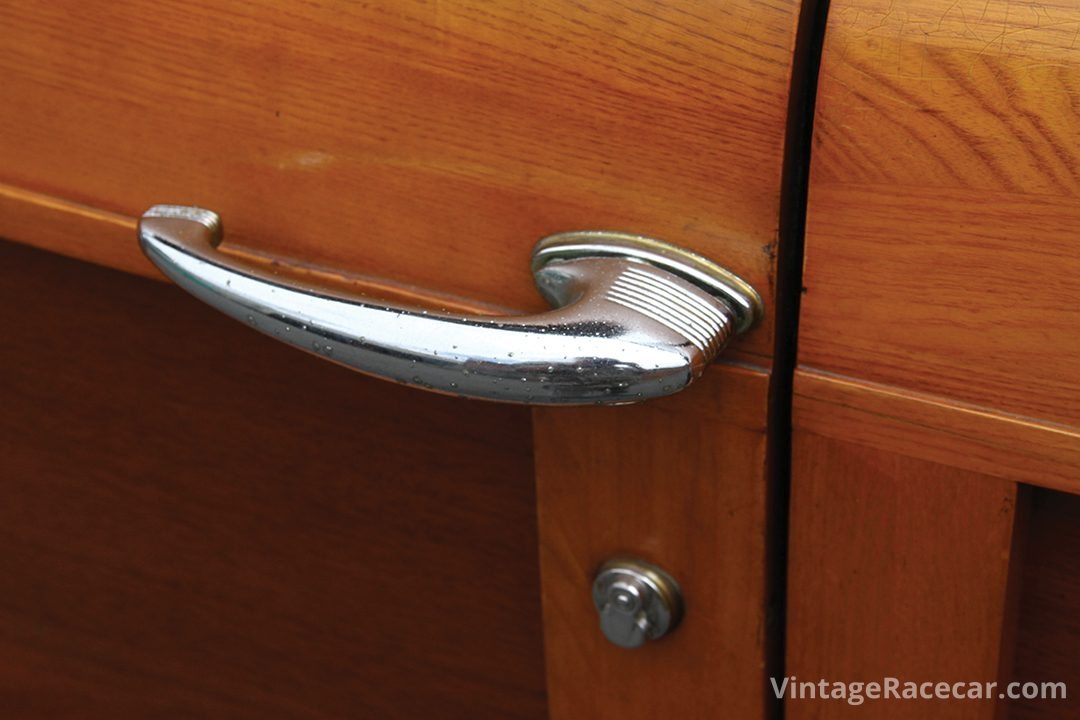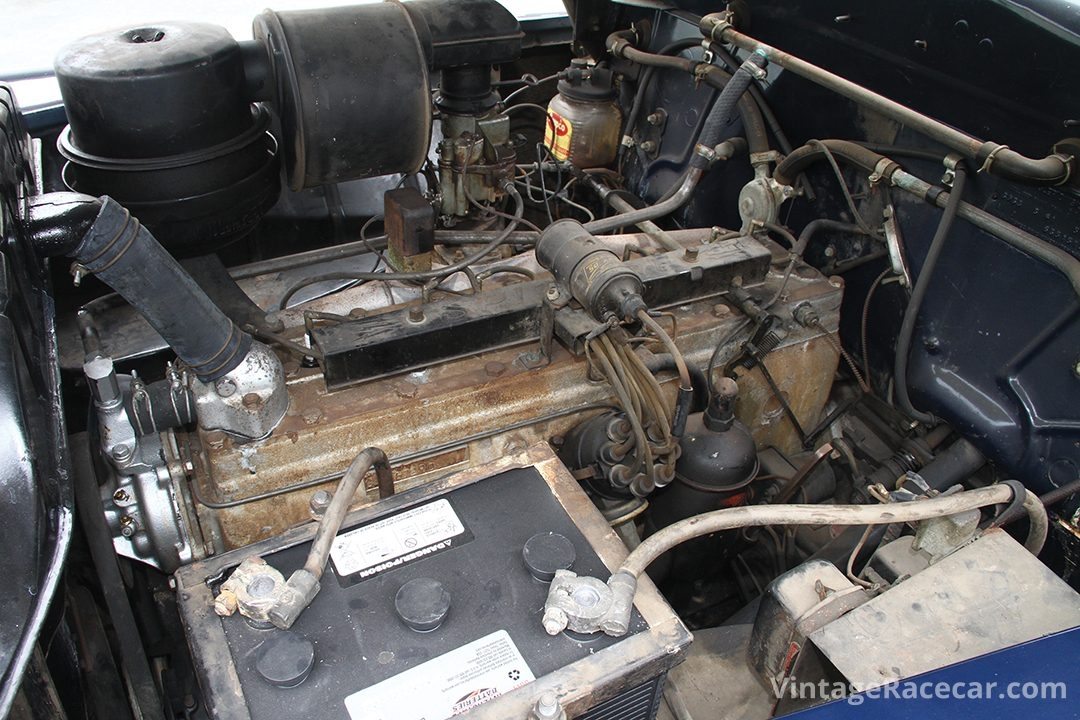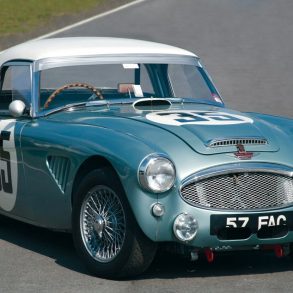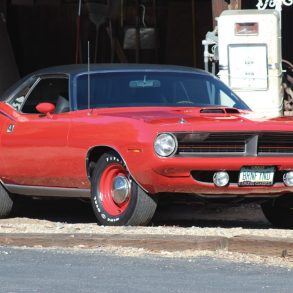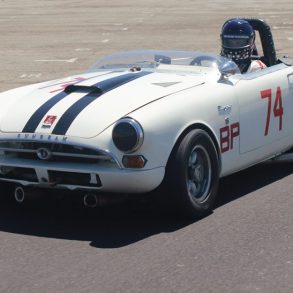1948 Chrysler Town & Country
Chris Kidd called a few days ago and said, “You guys have to see this! I found a 1948 Chrysler Town & Country convertible coupe just three blocks from the shop in unbelievable all-original condition, and it is beautiful. It has only 38,000 original miles on it and has been with one family since new.”
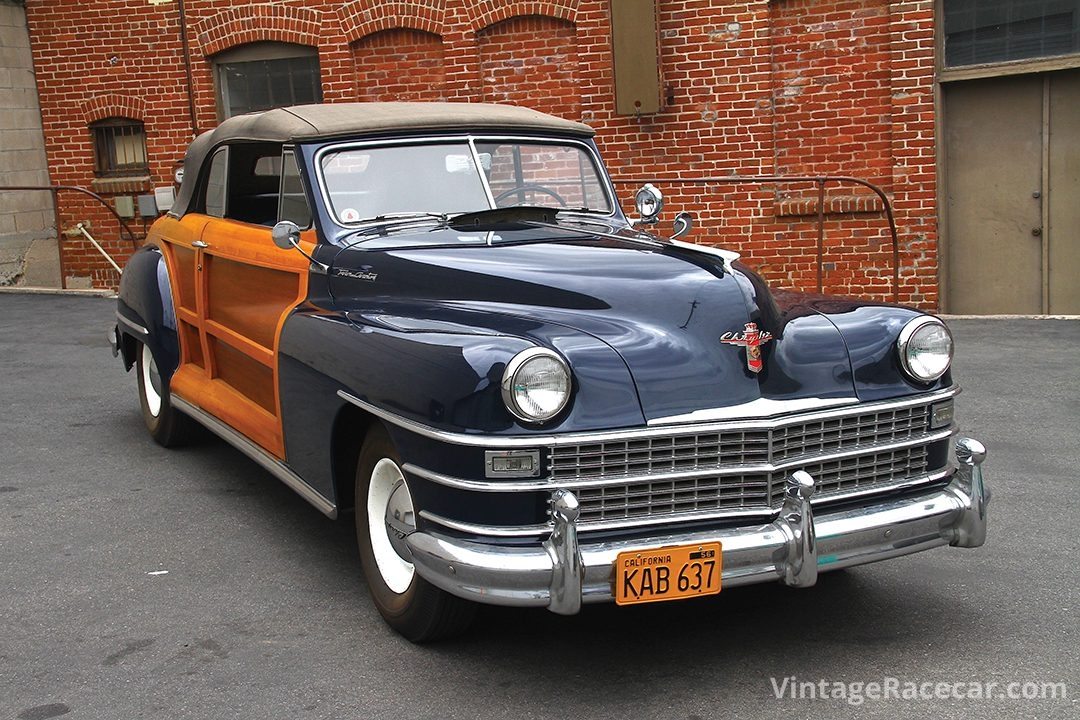
When we walked into the showroom at Chris’ place there it was, right up front, a 1948 Chrysler Town & Country convertible coupe, all 18 feet and 4,300 pounds of it. Of course, some of that weight is due to the fact that the body from the cowl back is made of white ash strakes and Honduran mahogany veneer panels, but the rest is because the car is built like a steam locomotive. It looked like a streamlined art deco car mated to an antique refrigerator thanks to all that handsome varnished wood and those massive chrome door and trunk hinges that would be at home on a bank safe.
At first sight you would think the car was a recent first-class restoration, but it is not. It is in fact an all-original car, right down to its tin vintage simulated whitewalls and its Fluid Drive four-speed semi-automatic transmission. Its original paintwork and chrome are flawless, and its interior is as new. The only thing that falls short of pristine is its black top, which is faded ever so slightly. Chris jockeyed the leviathan Chrysler from the showroom so we could take it for a spin.
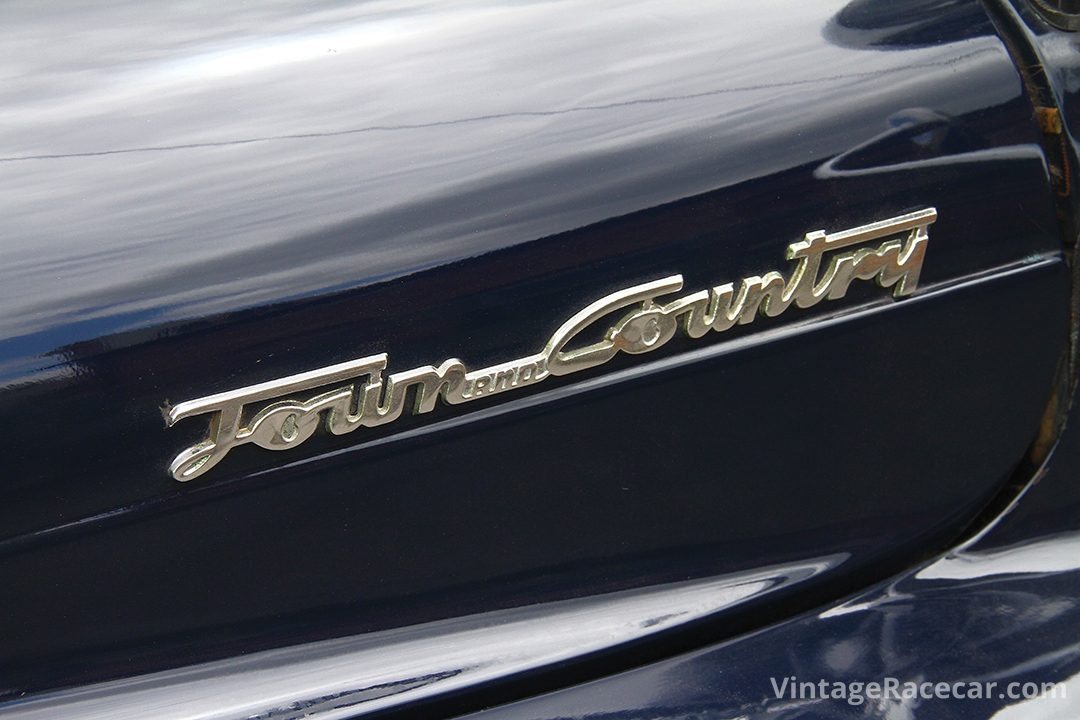
I turn on the key and press the starter button. The 324-cubic-inch, inline flathead eight turns over lazily a couple of times in order to pump fuel up to the carb, and then lights and settles into a silky smooth, almost silent, purr. I step on the clutch, which is actually a torque converter/clutch combination, and pull the column shift into high range. With a little throttle we are off at a dignified pace. Steering is light once you get rolling, and the car’s Fluid Drive transmission shifts smoothly into high gear as we pick up speed. The stylized eagle hood ornament is a Toyota Tercel length in front of me and points the way like a rifle sight.
This Chrysler Town & Country Convertible was the epitome of stylish boulevard cruising comfort for 1948. Everything is sumptuous, sturdy and top quality. There is not the slightest vibration from the engine, and only a slight whirr from the torque converter when you are shifting into gear, which only has to be done once to get rolling. After that you can drive around all day and come to a complete stop without having to use the clutch.
Chrysler Fluid Drive is long gone these days, but in the 1940s and early ’50s it was a favorite of taxi drivers because it was simple, convenient and virtually bullet proof unlike the full automatics of the day which were heavy, ate torque for breakfast and needed regular maintenance. Also, Fluid Drive was easier on the drive train because it shifted smoothly and gently thanks to its fluid coupling.
Impregnable is the word that comes to mind while driving in the T&C convertible. This behemoth crushes all before it, and as a result bumps are barely hinted at, and the car is smooth and silent, with no drumming or rattles. You feel in command; that is until some twit cuts in front of you in a VW Golf and hits their brakes. The Chrysler’s big drum brakes were up to standard and beyond for 1948, but they can be a bit scary in 21st century Los Angeles traffic where paying attention to the world around you instead of texting your friends is no longer fashionable.
People wave, smile and take pictures with their cell phones as we drive past. The younger ones have never seen a car with wooden bodywork except for perhaps an antique woody station wagon from which the car’s styling evolved. Surprisingly, after World War II, Chrysler built Town & Country sedans and convertibles, but they didn’t resume production of their pre-war barrel back woody station wagon.
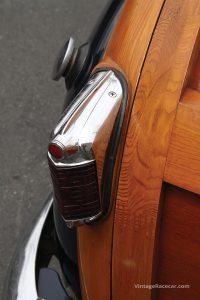
In 1923, Star offered an entirely factory-built depot hack/station wagon, but Star was a limited production independent that didn’t affect things much. Later, in 1929, Ford came out with the first factory-built woody wagon offered by the big three using a Model A chassis. Hotels, resorts and dude ranches purchased these vehicles to transport guests to their establishments as before, hence the name station wagon.
Railroads were still the main means of long-distance travel even in 1948, but by then woody station wagons were becoming popular among suburbanites and ranchers as well, thanks to their versatility and handsome appearance. In a way, they became the first SUVs. However, the initial cost and the frequent maintenance required for wooden vehicles (manufacturers recommended varnishing them every six months) limited their sales somewhat, and eventually caused them to be phased out by the early ’50s.
The golden age of woodies and woody styling was actually the 1940s. Chrysler built a number of high-end station wagons, convertible coupes and handsome sedans using wood bodywork because it was beautiful and classy looking, much like the yachts and speedboats of the day. Chevrolet, Hudson, Packard, Nash, Pontiac and Oldsmobile also built handsome woodies and wood clad cars. But Ford and Mercury sold more woody wagons, sports coupes and convertibles than anyone else.
The standard wood body usually employed steam-bent stringers of ash with inset mahogany panels for most of the woody era, but by the time our Town & Country debuted, the inset panels were a mahogany veneer bonded to metal panels. This made for greater strength and durability. And the terms strength and durability describe a 1948 Town & Country well. Ford was unusual in that they used primarily maple for their woodies because Henry happened to have his own forest.
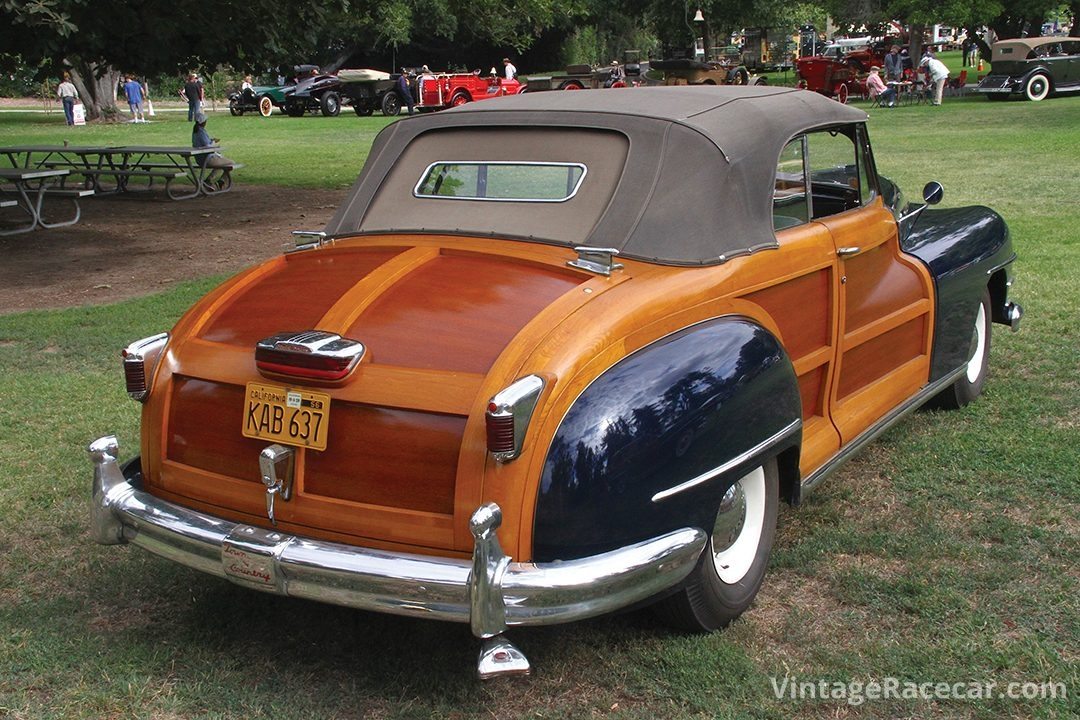
Later he left GM to take over at Willys Overland, and was able to rescue the company from imminent collapse, but was not able to wrest control of the company from John North Willys, so he bought Maxwell and started his own Chrysler Corporation in 1925.
The company’s first offerings bearing the Chrysler name were superbly engineered, handsome and fast, and were aimed primarily at the well-to-do carriage trade. And then, in 1928, Chrysler bought Dodge from the brother’s estate after the Dodge brothers’ unfortunate deaths due to the Spanish flu a few years earlier.
Soon after that the company offered its Plymouth brand, which was targeted for the low-priced market, and was actually a better-engineered car than either the Ford or the Chevrolet of its day. And then to fill the gap between Dodge and Chrysler the company came up with its DeSoto, in 1929, to compete with Buick and Oldsmobile.
Chrysler’s big handsome classics were the equal of Cadillac, Packard and the other great classics of the time, and were beautiful to behold. They were also fast, and were campaigned and came in 3rd and 4th at Le Mans in 1928. A few years later, however, the engineers at Chrysler took things to the next level, in 1934, introducing the company’s aerodynamically streamlined Airflow models.
The Airflows were wonderful cars, and their styling really impressed the Europeans and Japanese who copied it for the Volkswagen Beetle, Toyota AA sedan and Peugeot 302 of the time, but many Americans generally regarded the Airflow as bizarre and unattractive; and indeed, a little more attention to styling would have helped Chrysler compete more successfully with the other luxury makes of the era.
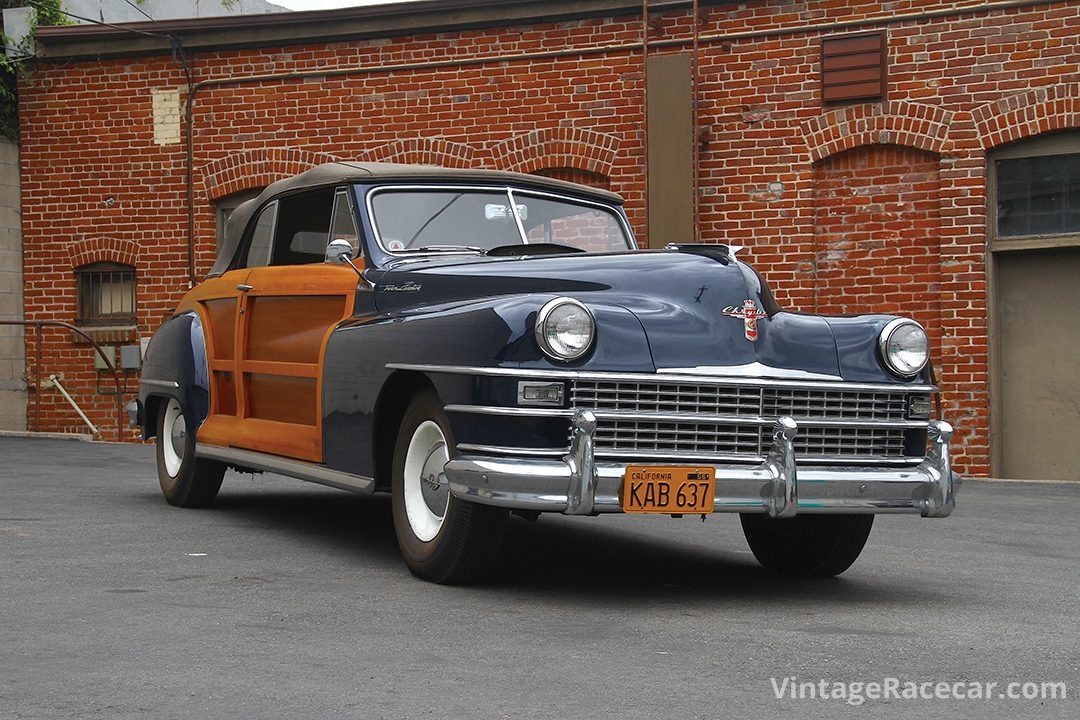
Because of the sales flop of the Airflow of the early ’30s, Chrysler styling became staid and conservative for the next 20 years, hence the sometimes underwhelming looking offerings of the late ’30s through the early ’50s.
In the 1940s, if a customer wanted flash and dash he bought a Cadillac. If he wanted the conservative and aristocratic look he bought a Packard. But if he wanted a dependable, well-engineered car and was happy with decent but unremarkable looks, he bought a Chrysler product.
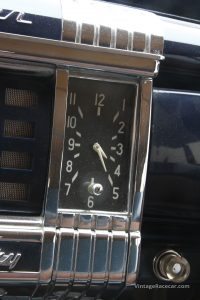
Mr. Williams took superb care of his baby and did all the maintenance himself. The car was mostly used when the family went to church, and for Sunday drives. The one time Williams let anyone else work on the car was when it needed a fuel pump in Albuquerque, New Mexico, while on a family vacation in 1958. Aside from occasional Sunday drives, the big Chrysler went on three cross-country excursions via Route 66 to Chicago, and thence to the East Coast, Washington, D.C. and Maryland.
It still has its original top and the woodwork appears to have been re-varnished only once, and is in perfect condition. The paintwork and chrome are almost as new. Its big 8:20×15 tires are, in fact, new, but everything under the hood is original and correct, right down to the inspector’s chalk marks on the underside of the hood. It still has its vacuum operated windshield washer and its huge original radiator, six bladed fan and accessory bug screen in front.
In the old days, on the Mother Road (as John Steinbeck called Route 66), there would be vast storms of insects flying around at night, so you either installed a bug screen or you had to pull into a gas station now and then and shoot water through the radiator from the back to clear it of insect carcasses to prevent over-heating.
Big cast iron, flathead, inline eight-cylinder engines did not dissipate heat quite as well as modern engines, and they used only water under low pressure for cooling, so a healthy cooling system was critical to engine life, but those big inliners had advantages that modern engines don’t offer. For one thing they were incredibly smooth and quiet. All you heard with the hood open was the fan.
And those big old inliners produced prodigious amounts of torque at low- and mid-range where it is most usable. They were not revvers, but that was a good thing because those engines put out a lot of power at low rpm, and thus they were also long-lived.
These days people see the flathead design as antiquated and I suppose it is, but there were good reasons for that configuration that are all but forgotten today. With a valve-in-block design the valve train is short, simple and sturdy, and requires only occasional adjustment. It is also lighter than an overhead-valve setup. Its main limitation—in fact, the one that killed it in the end—was that compression couldn’t go above about 8.5 to 1 because of combustion chamber limitations.
The Town & Country moniker debuted in 1941 with what was often called a barrel back sedan thanks to the shape of the rear of the vehicle. It was also the first station wagon with an all steel top. Six and nine passenger versions were built, and they were available with six-cylinder engines as well as the straight eight.
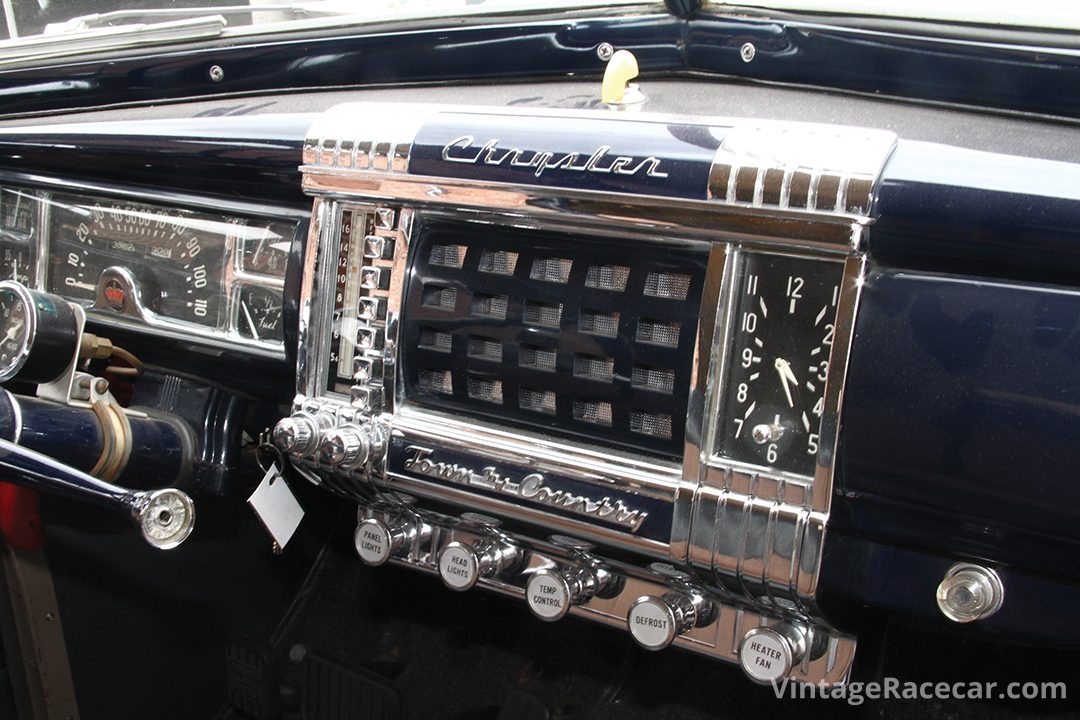
As we roll around town, I wish we could tune the radio to some big band music or the Andrews sisters singing Boogie Woogie Bugle Boy to complete the picture. This car was—and still is—truly riding in style, and a rather unique style at that. It is emblematic of the 1940s and the war years, and conjures up memories for those of us of a certain age.
Depot hacks and horseless carriage bodies were made of wood, and then they went to wood bracing with metal tacked over it, and finally, the companies went to all-metal bodies for cars in the late ’20s and early ’30s. But the rich beauty of the woody station wagons became a style of their own, and was soon used for other models as well.
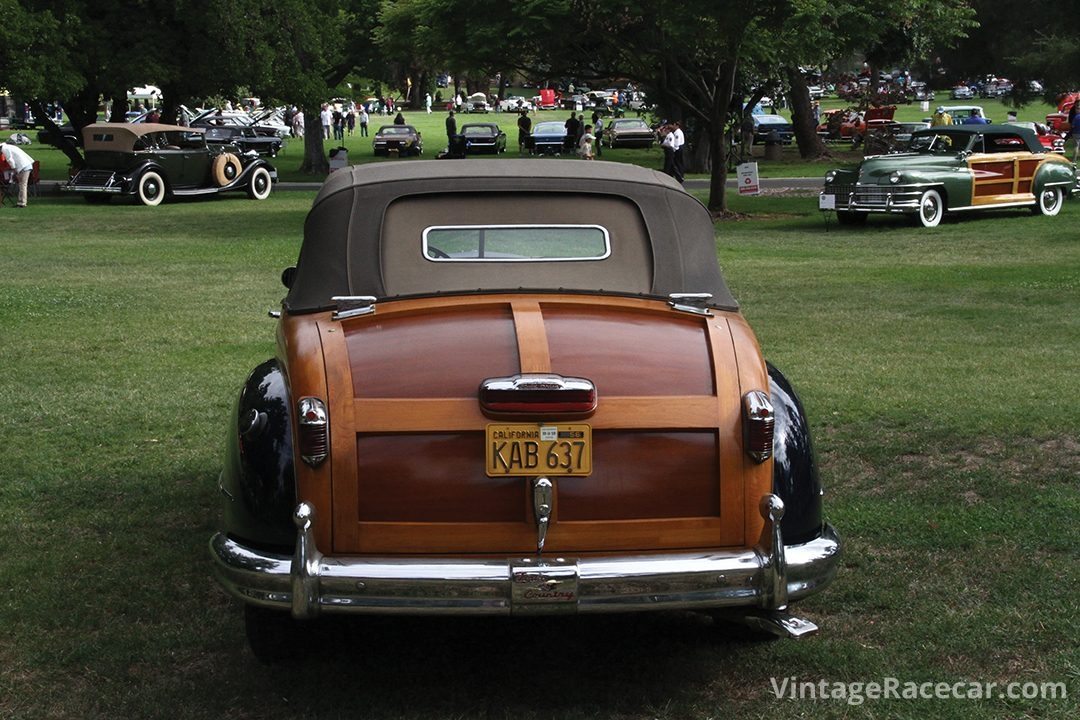
We swing back into Chris Kid’s facility majestically, like an ocean liner coming in to dock, and stop among the Lincolns, Packards and exotic racecars that are Chris’ stock in trade. It is hard to let go of this enchanting regal machine. I could drive on forever, and swing out onto what is left of Route 66 nearby for a smooth quiet spin to Chicago, with Oklahoma City and Flagstaff, Arizona, on the way. This car would get me there in comfort and style.
Click here to order either the printed version of this issue or a pdf download of the print version.


